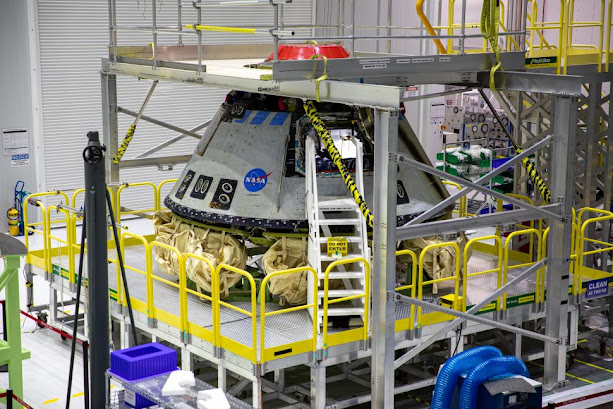Read & Write "Task 1. Three Technological Failures"
- The first software issue was identified shortly after Starliner launched, when the vehicle failed to execute an orbit-insertion burn. Boeing soon discovered that the spacecraft's onboard timing system, called a "mission elapsed timer," had erroneously pulled an incorrect time from the Atlas V rocket nearly 11 hours before liftoff. Starliner was supposed to retrieve that information from the rocket during the final countdown period before liftoff, and because this step happened prematurely, Starliner's internal clock had the incorrect time.
- Then a second software problem was discovered before the spacecraft's return to Earth, and this glitch could have potentially led to a collision between Starliner's crew module and its service module, which are designed to separate in orbit before the crew module lands.
Early in 2012, Google co-founder Sergey Brin debuted Google Glass. A year later, the founder and head of the Google Glass Project, Babak Parviz, delivered a keynote about the technology at the IEEE Hot Chips event at Stanford.
One of the ongoing leading smart phone trends is the ever-improving screen resolution and larger screen size. During his keynote, Parviz argued that there was a physical limit to this trend, but glass offered the next display form factor evolution, i.e., immersion with one’s surroundings. This will be especially important in augmented reality applications.
Originally, Google Glass was a standalone unit (not yet cloud-based) that included internet access, voice controls, and a camera for pictures and videos. It accomplished all of this with dual core processors running at more than 1 GHz. Five MEMS sensors capture all the environmental data. It had a two-dimensional touch panel on side of glass.
Why was this technology a failure? It wasn’t because of the technology, but rather because it wasn’t clear to the customer what problem it solved or why they needed it. Additionally, many felt it was intrusive as a user of the device could take pictures and short film snippets of people without their knowledge.
#3 Cloud BucketsA new type of cybersecurity issue has emerged in which millions of people have had their personal information exposed through file storage systems known as cloud buckets. Such storage areas typically consist of public resources that are easily accessed by a variety of web service applications. Cloud buckets are like public file folders which contain user information.
Placing sensitive user data information in the cloud offers companies the capability to offload their security to big firms like Google, Apple, Amazon or Microsoft. The problem is that the buckets are not configured by these firms but rather by the companies who use their cloud networks.
Not all of these companies are storing their customer information properly. This lack of security is easy pickings for identity thieves. It is an example of readily available information that doesn’t require any hacking.
# Source's Used:
https://www.space.com/boeing-starliner-2nd-software-glitch-potential-collision.html
https://www.designnews.com/electronics-test/top-10-tech-failures-2019-hint-2020-trends/gallery?slide=2
https://blog.google/products/devices-services/glass-enterprise-edition-2/
https://www.investopedia.com/articles/investing/052115/how-why-google-glass-failed.asp
https://threatpost.com/google-cloud-buckets-exposed-misconfiguration/159429/?web_view=true
https://securityboulevard.com/2019/07/hacker-group-magecart-attacking-misconfigured-s3-buckets-2/




Комментарии
Отправить комментарий